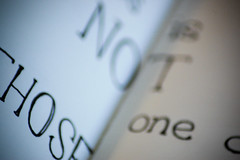 For what it’s worth, this blog is now available over on the Kindle Store for the Amazon-imposed price of $1.99 a month.
For what it’s worth, this blog is now available over on the Kindle Store for the Amazon-imposed price of $1.99 a month.
Of course, if you do decide to read it on your Kindle, you’re going to lose the standard form of a blog: the distinctive page shell, the list of posts, and probably the comments. Just like if you read it in Google Reader or any other news application. If someone links to this article on Twitter and you use a magazine app like Flipboard on your iPad, you’ll also have a completely different experience. Same exact content; different layout depending on your circumstances.
For reading consumers, this is a significant advance. Circumstances do change: what’s convenient for me to read in bed is different to what’s convenient at the office, on a train or spending ten minutes in a coffee shop. Each of those may require different devices, different software applications and different settings depending on what I’m doing.
For these reasons, software developers and web designers have been used to separating form from content for years. Model-View-Controller is a commonly-used software design pattern that separates data (the model) from both logic (the controller) and visual interface (the view) in a system, ensuring that each can be changed without affecting the others. Now that content is moving wholeheartedly into the digital arena, it makes sense for it to harness some of the same ideas. In a book, the words might be the model, the typography and layout might be the view, and the physical framework of the book itself might be the controller.
That opens publications up to a kind of remixing they’ve traditionally been insulated from. Geeks who love Hacker News but find the interface hard to read can install Georgify to make it more typographically palatable. People looking for emotional inspiration on Twitter can spend a couple of minutes with Twistori, an app that pulls out certain tweets and displays them in an appealing, emotionally resonant way. Mostly these kinds of things have been impossible with Wuthering Heights or The New Yorker.
There are a lot of people, I know, who love the form of books, and who are frightened of that changing, ever. And it won’t: there will always be books. But digital technology gives artists the power to explore new forms for content, that can be disassociated with the content itself and applied, again and again, to different words, in order to create whole new works. If your Twitter stream can be a book, then a book can be a real-time application, or fragments scattered in time and geographic space, or anything you can get your head around. And anyone can remix, and reskin, and make the form – as well as the content – have a life of its own.
If you’re in London on May 14th, Book Hack Day will cover some of these ideas. Regardless, I’d love to read your hacks and play with your words. I think there are many possibilities, and I’m excited to explore them.
Leave a Reply to Katie Piatt Cancel reply